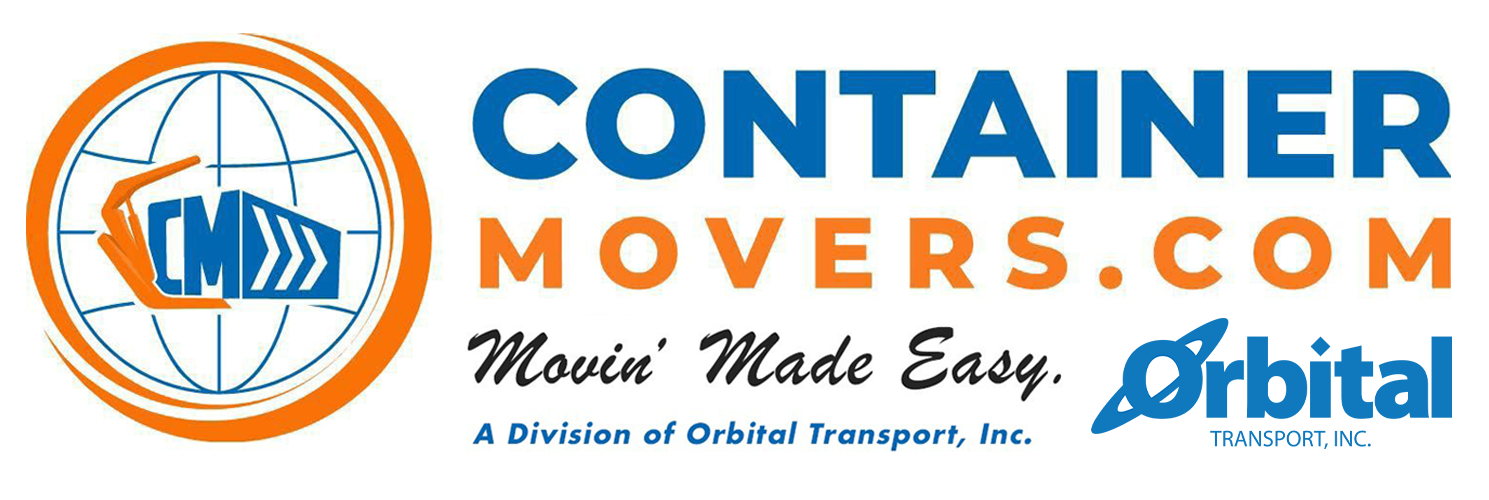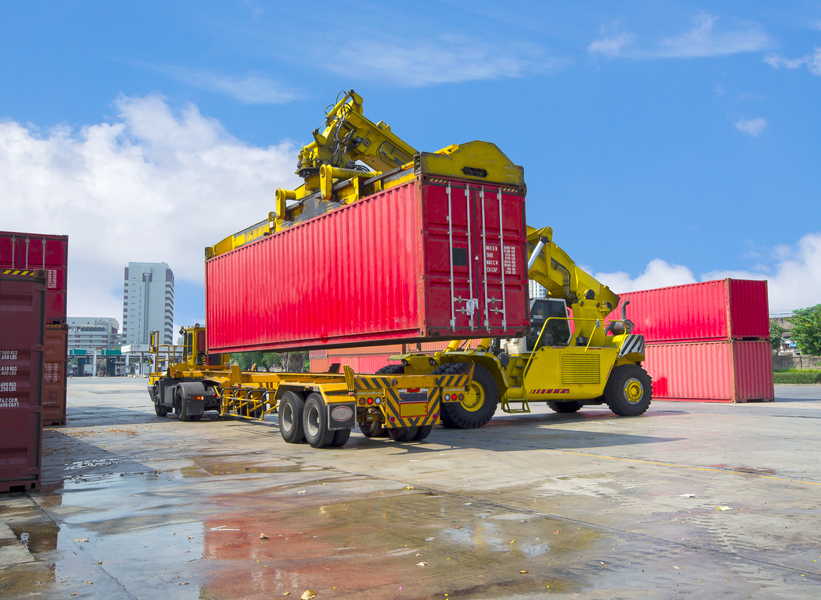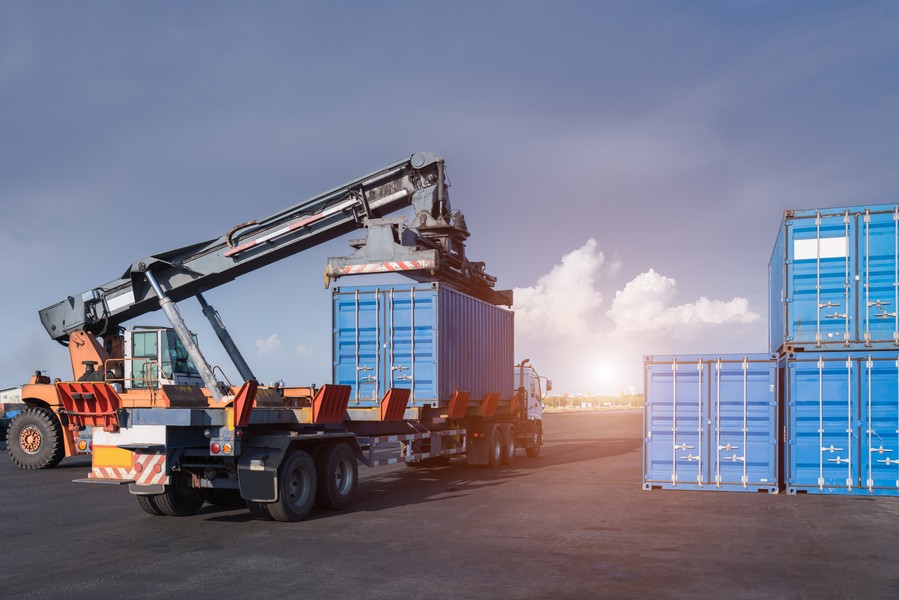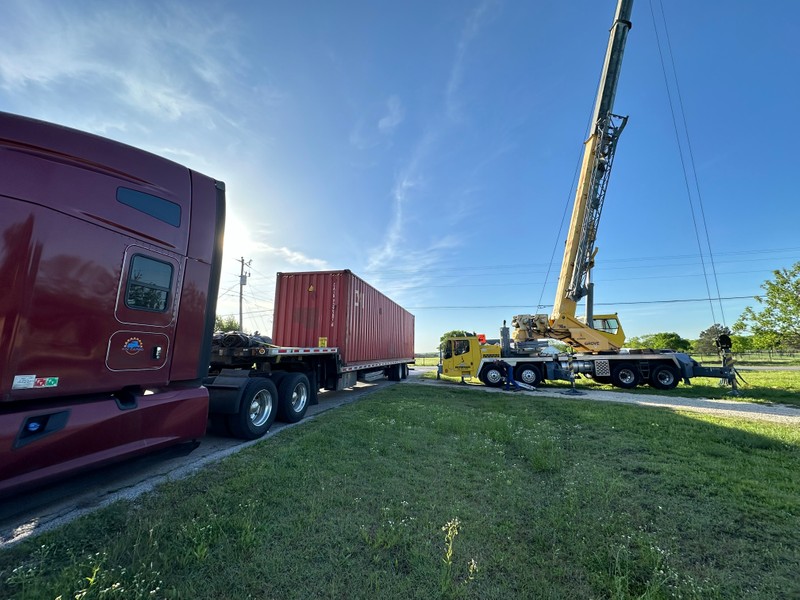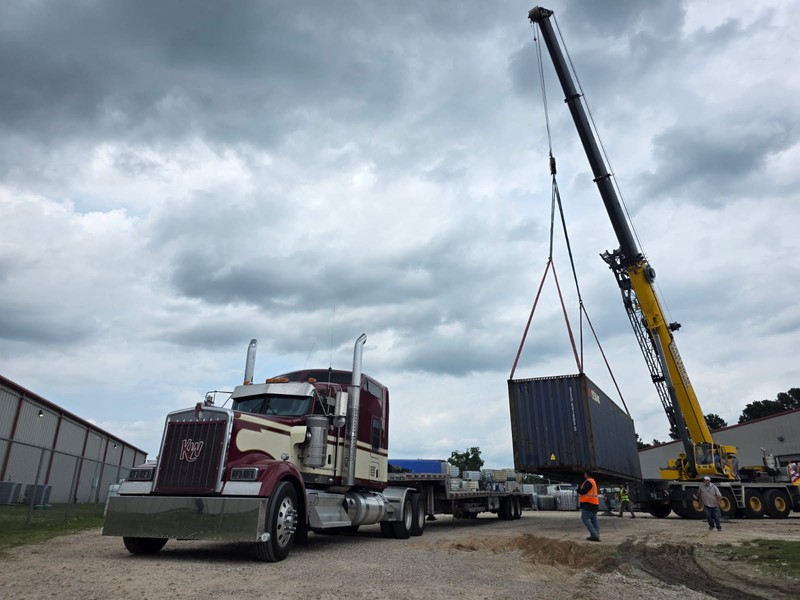We Are Your Efficient & Innovative Container Transport Service Company
Shipping Container/Conex Box Transport Services
Container Movers offers a number of transport services and solutions by utilizing sidelifters, landolls, as well as mobile cranes. Our efficient container hauling services are offered throughout the US. Allow us to ship your container, or move a 3rd party container for you.
Level Lift Loaded Conex Boxes/Shipping Containers
Along with Landolls and mobile cranes, our unique sidelifter mobile crane trucks are capable of lifting and moving fully-loaded conex boxes/shipping containers. The sideloading truck and trailer allows us to lift containers straight up and set them straight down (no tilting)! Container Movers sidelifter trucks utilize self-contained loading technology and can safely transport and handle fully loaded conex boxes/storage containers.
Our side loading container trailer and sidelifter trucks result in less restrictions than conventional trucks and more efficient container handling solutions. Our unique ability to level lift loaded conex containers without tipping them saves you time and money!
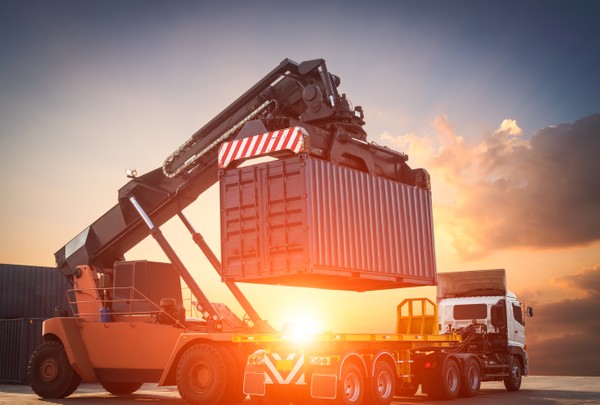
- Level Lifting Capable
- Lift Fully Loaded
- 20', 40', 45', or 53' Containers
- Intermodal & Privately Owned Containers
- Storage Container Transport
- Nationwide Pick-up & Delivery
- Drayage Service
- Landoll Service
- Crane Service
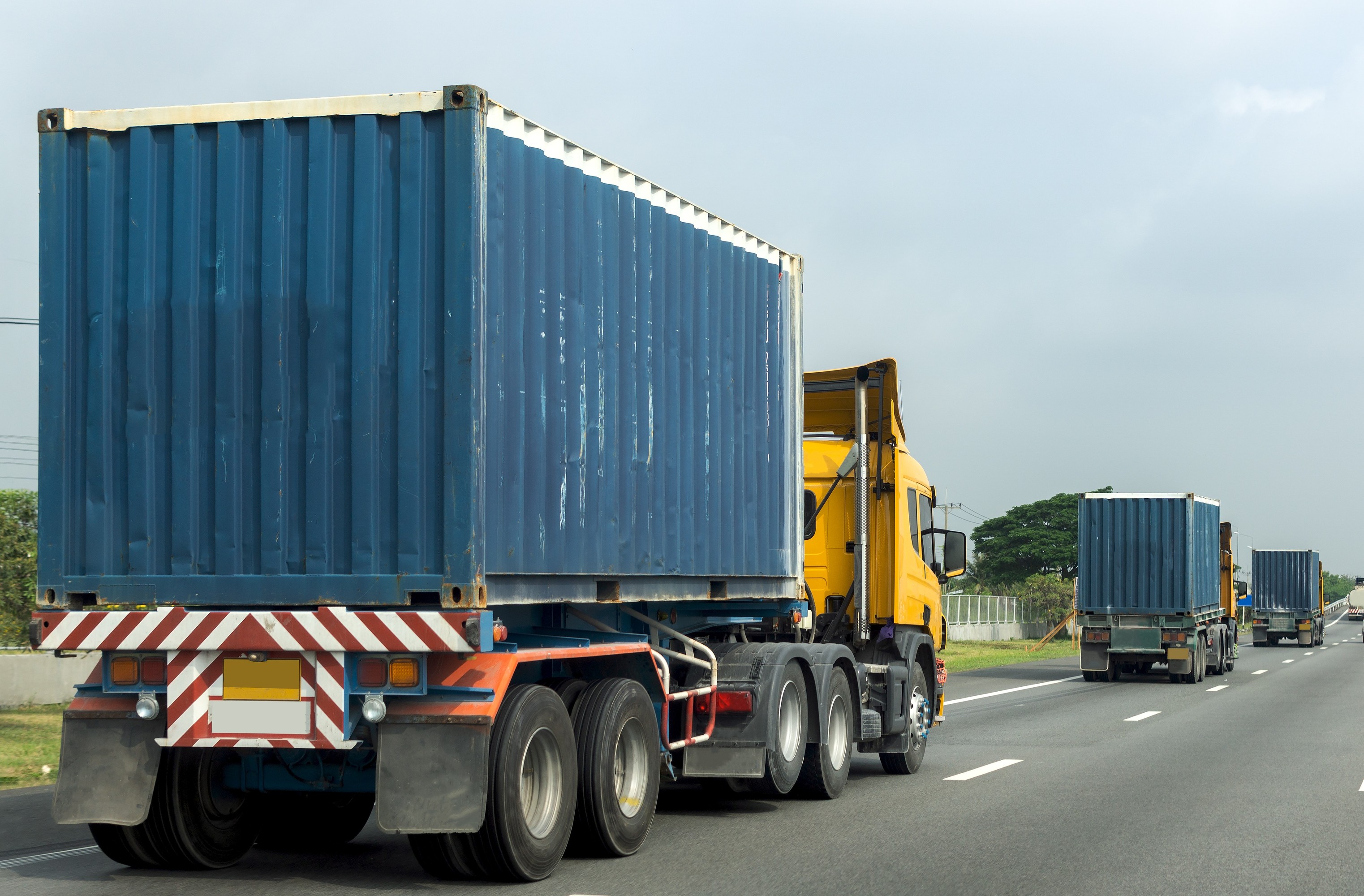
Save Time & Money While Increasing Productivity As We Safely & Easily Manage The Pick-Up & Delivery Of Your Containers
Through Container Movers' array of transport services, including our unique level lifting system, we make the loading and unloading of conex storage containers easy! Regardless if it’s a 20, 30, 40, 45, or 53 ft conex storage container, we can easily handle the pick-up and delivery of your containers.
Container Moving Options
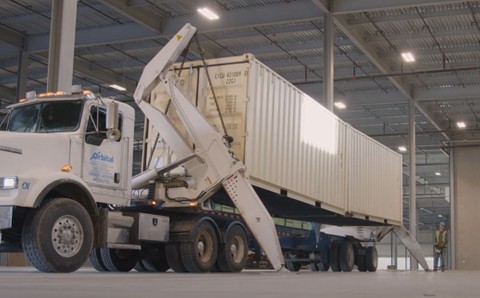
Level-Lifting Capable
If a level lift is what your shipping container needs, we have a network of sidelifters, cranes, and rotator trucks throughout the country that can get your container off the ground safely. We’ll work with you to see what type of container moving equipment would work best for your specific needs.
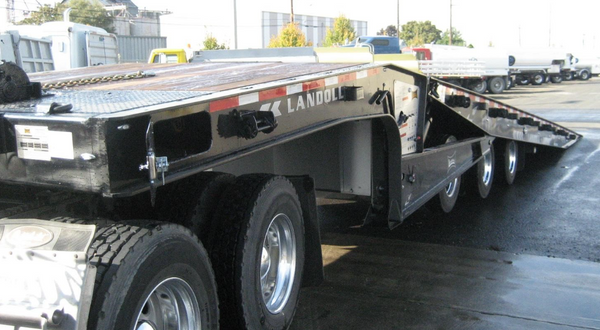
Landoll Service
Whether empty or loaded, a landoll is a type of trailer that winches the container up while the trailer is tilted. If loaded, the contents would be tilted- so it’s important to secure the load if this is how your container will be transported. These types of container moving trucks are perfect for short distances and relocations.
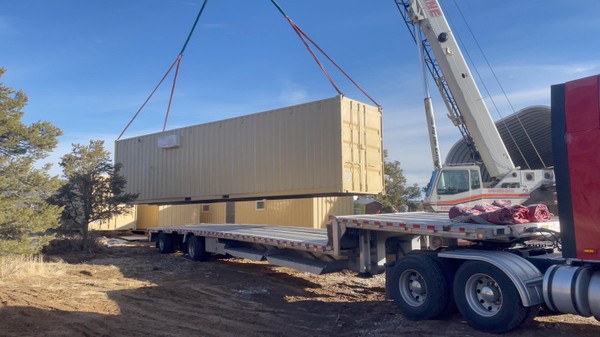
Crane Service
Do you need to transport your container long distances? A crane is likely what will be doing the loading and unloading from the shipping container truck responsible for hauling it. We include an estimate of this in our quote if it is deemed necessary, and with your involvement we will arrange it for you to ensure that the process goes smoothly.
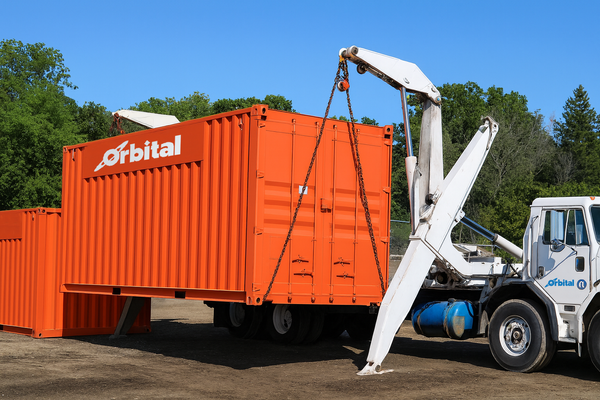
Sidelifter or Sideloader
These trailers are specifically designed for lifting and transporting a shipping container that is fully loaded. Its advanced level lifting capabilities ensure safe and efficient handling of your storage or shipping container. This feature is crucial for maintaining container integrity during loading and unloading, reducing the risk of damage.
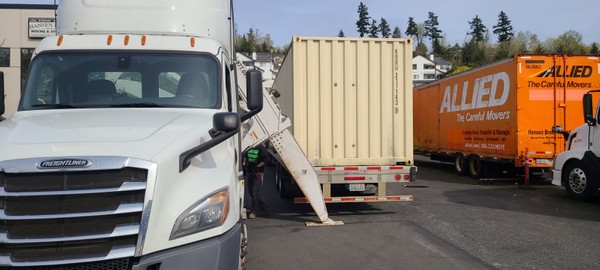
Common Mistakes (and How to Avoid Them)
Avoidable costs come from late planning and awkward placement. A low utility line, fence too close, or driveway too tight can turn a simple pickup into unload → reposition → reload. Use Container Movers' checklist below to keep the move straightforward and on budget.
Not planning early enough
Equipment windows, permits, and crew schedules are finite; late starts shrink options and drive costs up. Call Container Movers early—we'll lock in the right gear and sequence the day.
Placing the box where heavy gear can't return
Rollbacks and light wreckers are nimble and can set a box behind fences, down alleys, or deep in yards—but loaded pickups need larger equipment and room to work. Result: forced unload → reposition → reload (costly). Call Container Movers before placement if you plan to move it loaded later.
Ignoring overhead wires and obstacles
Lifts need boom height and swing clearance. Low lines can stop a job cold or force a crane you didn't budget for.
Assuming a crane will fit a residential driveway
Many driveways can't support a crane's footprint or outrigger loads. Container Movers verifies ground bearing pressure, approach paths, and setup room.
Treating the container as an afterthought on job sites
When mobilization day comes, equipment, materials, or temporary fencing can block access. Container Movers coordinates a clear working envelope so we can actually reach and lift your box.
DIY coordination of cranes + trucking
Without knowing the right rotator specs, rigging plans, or flat-rate linehaul norms, you'll see prices all over the map and may hire uninsured operators. Container Movers manages the end-to-end plan, vendor vetting, and scheduling.
Hiring drayage-only movers for a complex property
Port drayage is different from on-property placement, lifting, and exact set. Container Movers does the latter every day.
Not confirming local equipment availability
The sideloader/rotator you need might be 200 miles away or booked. Container Movers sources regionally and secures the slot.
Underestimating total cost
"Cheapest" often means uninsured or the wrong tool, leading to delays and re-handles. Container Movers recommends the safest, most economical complete plan—not false low bids.
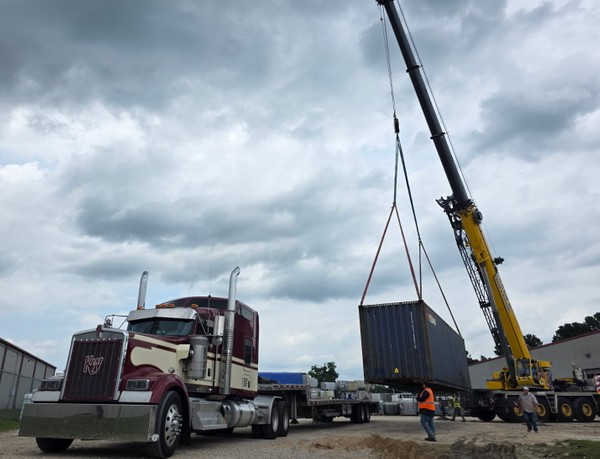
Permits, Regulations & Weight—What Most People Miss
Most container moves don't need special permits; issues usually come from weight and local rules. Container Movers checks city/HOA restrictions, verifies authority and insurance for interstate work, and secures overweight permits and routing when contents push legal limits.
Residential ordinances: Some municipalities (and HOAs) restrict or prohibit permanent container placement. Container Movers flags this early and advises on temporary-use limits, setbacks, and practical alternatives.
-
Divisible vs. non-divisible loads: Most container moves are treated as divisible (no oversize permit for the container itself). Permitting issues typically arise from weight, not the box.
Overweight realities: Many grounding/moving setups cannot handle loaded containers. Container Movers' fleet is configured for heavy lifts and legal transport.
- Over-the-road: We can move containers up to 40,000 lb legally (route- and jurisdiction-dependent).
- Lifting capacity: We can pick up to 72,000 lb in controlled, engineered scenarios.
- Creative configurations: We can position the container on a chassis and optimize tractor weight to increase legal payload when appropriate.
Commercial weight permits: When contents are particularly heavy, Container Movers secures route-specific overweight permits and plans axle groupings to stay compliant.
Rare non-divisible cases: If your container holds a single large, indivisible machine, permits and routing change—it's uncommon but Container Movers handles it.
Compliance & insurance: Many light/medium-duty operators lack DOT authority, MC licensing, and adequate insurance, especially for cross-state moves or household goods. That puts your contents at risk. Container Movers operates with full authority, insurance, and documented safety practices.
Container Movers helps clients navigate all of the above with collective experience and careful planning.
The Hidden Risks of LOW-COST Container Shipping
Bargain rates are tempting, but submarket pricing usually trades today's savings for tomorrow's headaches. The cheapest bids often rely on inexperienced drivers, questionable intermediaries, or under-maintained equipment—raising the odds of delays, damage, and disputes. Container Movers believes that paying a fair market rate secures experienced, properly licensed capacity and reduces risk end-to-end.
Why the Cheapest Bids Backfire
- Inexperience & weak compliance: Ultra‑low rates attract new or marginal operators who may lack mature safety practices, proper insurance limits, or interstate authority.
- Poor equipment & breakdown risk: Budget carriers are more likely to run older gear. Breakdowns and missed ETAs create cascading costs and stress.
- Unprofessional behavior & surprise fees: Low bidders are quicker to demand demurrage or accessorials when schedules slip, and slower to communicate or problem solve.
- Pricing that ignores real costs: Rock bottom quotes often skip unavoidable expenses—tolls, deadhead miles in regions with limited outbound freight, permits, escorts, or parking/wait time. Those costs resurface later as change orders.
Double Brokering: A Quiet, Expensive Problem
Double brokering happens when a broker or carrier accepts your load and then re‑brokers it to someone else without disclosure. That creates a long, opaque chain that puts your shipment at risk.
- No visibility: You don't know who actually has your container or how it's being handled.
- Claims complications: With multiple undisclosed parties, liability gets murky and claims are harder to resolve.
- Bad information: Pickup/delivery details can change or get lost "down the chain," causing delays and misroutes.
- Tracking chaos: With three or more entities involved, real‑time updates are unreliable or nonexistent.
- Financial exposure: In the worst cases, the real trucker isn't paid by the intermediary and seeks payment elsewhere; shippers can be pressured to pay twice. Fraudsters may also fabricate paperwork to trigger quick‑pay.
What Paying the Right Rate Buys You with Container Movers
- Vetted, licensed capacity: Active DOT/MC authority, proper cargo and liability insurance, and verified ownership of equipment.
- Professional operators: Drivers who can safely position containers, communicate changes, and handle tight sites without drama.
- Reliable equipment: Maintained tractors, trailers, and specialty gear matched to weight, access, and placement requirements.
- Predictable execution: Clear schedules, realistic ETAs, and a single accountable point of contact.
Container Movers' Quick Vetting Checklist
- Confirm carrier of record (not just a broker). Get DOT/MC numbers and insurance certificates naming you.
- Ask who owns the truck/trailer that will show up (company name and unit numbers).
- Verify the exact equipment being dispatched (sideloader, Landoll/tilt, rotator, crane) and lift plan for loaded moves.
- Request the demurrage/layover policy and what's included in the rate (tolls, deadhead, permits).
- Require tracking/updates and a single day‑of contact.

Bottom line
The lowest bid is rarely the best value. A fair, transparent rate aligns incentives, covers the real costs of safe transport, and preserves your peace of mind—especially on long distance moves. Container Movers is committed to providing that value and transparency on every move.
Frequently Asked Questions of Container Trucking and Moving Companies

How do I get a standard 40-foot, or 20-foot shipping container moved?
Loaded or empty, how do you move a container? There are a couple different ways that are available depending on your specific circumstances. Loaded containers can be a complicated process that if done wrong can result in financial disaster. So how do they move these shipping containers? There are multiple different methods, landolls, sideloaders, tilt-beds, and standard flatbed/step-decks. If you have an empty container, using a simple tilt-bed or a landoll would be the most cost-effective option. Using a container to move across the country? Anticipate cranes to load and offload your container and a flatbed to transport it. The “one and done” trucks do not travel long distances, so there needs to be a way to pick up the container off the ground and subsequently put it down on the ground at the destination. Click here to learn more.

How do you transport a shipping container without a crane?
The most effective way to move a container without a crane or forklift is by using a tilted bed trailer, such as a Landoll, or a sidelifter. Some landolls might not be able to move loaded containers, you’ll want to check with us if there is one in your area that can. You will need to ensure that there is enough space around the container for either of these two options.

What kind of trailer is needed to transport a shipping container?
The most common trailer used to haul and deliver a container is a standard container chassis. These are primarily found transporting cargo in and out of ports and can be a little hard to come by outside of that area. Landoll’s are common, some can winch up to 35,000lbs. Sidelifters can level lift and transport loaded containers most efficiently without tilting the container. Tilt-bed trailers and drop deck trucks primarily move empty 20’s.

How heavy is a shipping container?
Typically, an empty 20-foot shipping container weighs between 3,970 - 4,850lbs and an empty 40-foot shipping container weighs 8,340 - 9,260lbs depending on what kind of container it is. But your container will tell you about the exact weight on the door.

How to move a shipping container by yourself?
There isn’t really a good way to move a container yourself unless you have the actual equipment designed to move them. If your container is stuck in a tight spot, using chains to pull it out with a truck could potentially be an option. You pose a serious risk of damaging your vehicle or yard, but in a bid to save on costs it could be an option. Outside of that, moving a container by yourself without a trailer or chassis is impossible.
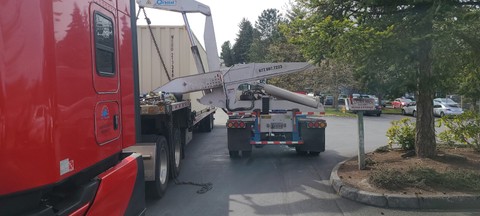
Can I use a shipping container to move Residentially or Commercially?
Absolutely! If you don’t already own a shipping container, we can get you in touch with the right people to purchase one. Using a Conex for moving allows you the freedom and flexibility to load the container at your leisure. Planning for a move can be stressful, at Container Movers we try to take the stress out of moving and plan for all contingencies. We’d be more than happy to answer any questions you may have over the phone (877-697-7223); our team are experts when it comes to containers and how to move them.
How much does it cost to transport or move a container?
Moving a container is usually a multi-step process, so there are a lot of factors to consider to get an idea on pricing. Click here to learn more.

How Do I Arrange for Container Delivery or to Move a Shipping Container?
Through us, of course! We’re the experts at moving containers and have the strongest network of carriers in the country that move them. We realize there might be a lot of questions you might have, and even questions you might not know to ask. Do I need a crane? Is a Swinglift or sideloader an option? How should I load my shipping container? How do I accurately estimate the weight of my Conex? Are there any container movers near me? Give us a call, even if you’re not sure where your container will end up, we can help inform you on the process.
What Is Drayage?
Definition: Transporting goods a short distance via ground freight or the charge for such a transport. In freight forwarding, Drayage is typically used to describe the trucking service from an ocean port to a rail ramp, warehouse, or other destination.
History: The word Drayage originally stems from the term dray, a low cart without fixed sides that is used for carrying heavy loads a short distance. Although a dray is defined as a cart historically, a dray may be any vehicle used to transport heavy loads a short distance, such as a truck or sled.
Leaders In Nationwide Shipping Container Delivery Service & Drayage Services
Local Pickup, Nationwide Delivery!
Our drayage services provide quick, efficient delivery of time-sensitive goods. By using our services, there is no need for you to make the costly capital investments needed to ship your own large, important assets.
From the East Coast to the West Coast, from simple freight deliveries to industrial and commercial intermodal transports, we have done it all. We manage many time sensitive logistical transportation projects for respected clients. Allow us to be your nationwide shipping container transportation service!
